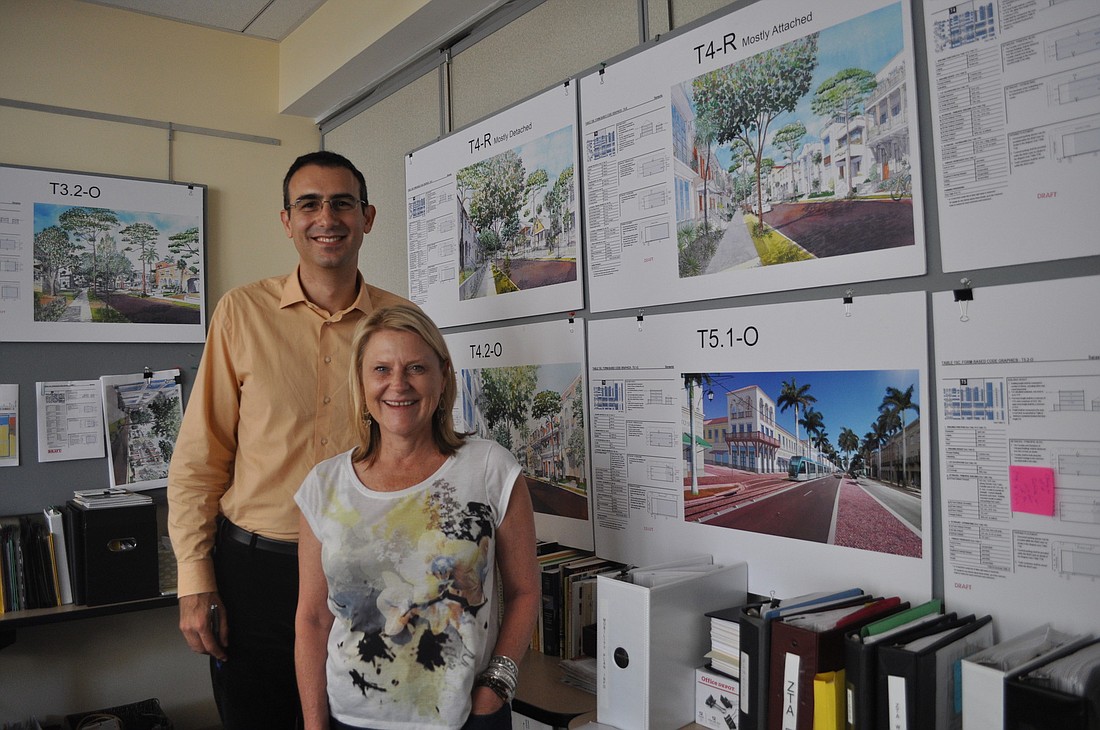- April 18, 2024
-
-
Loading

Loading

Halfway through the three-year process of developing a new form-based zoning code for the city of Sarasota, the fruits of the Urban Design Studio’s labor are surfacing.
The city of Sarasota created the Urban Design Studio in 2013 to undertake a lofty challenge: rewriting the city’s zoning regulations and replacing them with a form-based code. The cost to complete the project is estimated to top $900,000.
For those who have not been closely watching the machinations of the trio leading the Urban Design Studio, it’s possible that the group’s work has gone unnoticed. In 2015, that’s set to change.
Already this year, the studio has continued its efforts to reach out to various neighborhoods within the city, conducting walking audits of the Avondale, Bay Point Park and Hudson Bayou neighborhoods. These walking audits are crucial in the development of the form-based code because they allow residents to inform the designers about the elements of their neighborhood they like and dislike.
Before the new code is ready, the Urban Design Studio will conduct a walking audit of all 68 neighborhoods in the city. Over the next nine months, the group will target clusters of neighborhoods, giving residents a crash-course in the guiding principles and explaining how the code will impact their neighborhood — and its surrounding areas.
“We want them to share their experiences with each other,” Urban Design Studio Director Karin Murphy said. “They see their commonalities and their differences.”
The goal of the form-based code, which prioritizes the physical form of buildings, is to ensure predictability when new developments arise — for both residents and developers.
In February, Murphy and Principal Urban Designer Andrew Georgiadis are scheduled to go before the City Commission to present an initial round of amendments to the text of the zoning code. Intended as a stopgap until the new code is finalized, the proposed changes hint at the type of issues the studio will be seeking to revise citywide.
Among those changes are revisions to the definition of a story, an increase to the maximum size of an accessory dwelling unit and a heavier emphasis on preserving and restoring elements of the natural habitat.
A draft version of the new form-based code should come in the winter, Murphy said. Between now and then, the group will be in constant communication with residents.
The work goes beyond simply regulating how buildings look; it aims to weave a cohesive fabric out of a variety of elements that includes streetscapes, the natural environment and more. For a city that has long fixated on density in conversations about new developments, the changes have occasionally been jarring.
Once all the pieces fall into place, however, the Urban Design Studio believes the development process will be smoother.
“We think you’ll like this kind of coding,” Murphy said. “You help us create it and make sure we get the calibration right.”
FACTS FOR ’15
The issue: The Urban Design Studio is drafting a version of the new form-based code by the winter.
Why you should care: Largely conceptual to this point, the first phases of Sarasota’s forthcoming form-based code will be implemented this year. The new code will govern development throughout the city.
What's next: Through September, the Urban Design Studio will meet with clusters of neighborhoods to discuss the impact the code will have in that area. In February, the studio will recommend some changes to the current code.